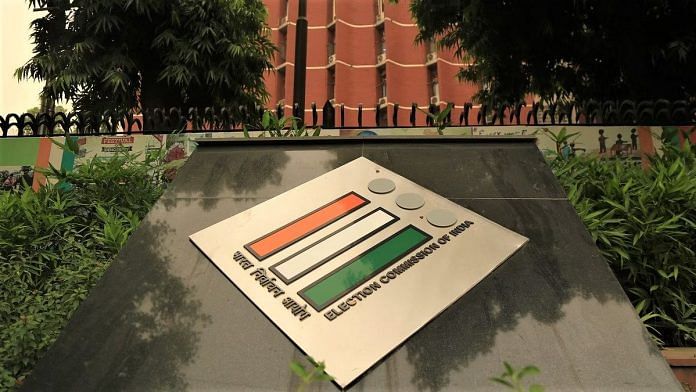Thank you dear subscribers, we are overwhelmed with your response.
Your Turn is a unique section from ThePrint featuring points of view from its subscribers. If you are a subscriber, have a point of view, please send it to us. If not, do subscribe here: https://theprint.in/subscribe/
In the digital era, India’s democracy is poised for transformation with One Nation, One Poll (ONOP), aiming to synchronize Lok Sabha and state assembly elections. This initiative not only seeks to enhance electoral efficiency but also to future-proof the process with cutting-edge technology. Inspired by NASA’s email voting for astronauts, we can integrate blockchain, biometric authentication, and vote-by-email systems to streamline elections while ensuring top-notch security and compliance.
Drawing from my experience as an early smartphone CTO and VSMP CTO, I’ve witnessed how governance, workflow automation, and collaboration can revolutionize industries. Applying these principles to ONOP will enable a seamless, secure, and efficient election system, incorporating the latest in cybersecurity and voting technologies.
The Case for ONOP
The One Nation, One Poll initiative proposes that elections for both the Lok Sabha and state assemblies occur simultaneously, ideally in a single day or in a few phases. Currently, the staggered elections in India create significant logistical, governance, and financial challenges. ONOP aims to address these by offering several key benefits:
- Cost Efficiency: Conducting elections simultaneously would drastically reduce the expenditure on security, infrastructure, and personnel.
- Governance Continuity: Frequent elections disrupt governance as governments operate under the restrictions of the Model Code of Conduct. With ONOP, policy-making would proceed without interruptions.
- Reduced Voter Fatigue: Multiple elections throughout the year can result in voter fatigue, leading to low turnout. A single, consolidated election cycle would boost voter engagement.
- Streamlined Campaigning: Political parties would need to focus resources on a single major election cycle, rather than running costly campaigns at different times for different levels of government.
The Role of Blockchain in ONOP and Vote by Email
Blockchain technology, already recognized for its security and transparency, can be a game-changer for ONOP and vote-by-email systems. Here’s how it can be applied to ensure that a one-day election or a vote-by-email system is secure, transparent, and efficient:
- Decentralized and Immutable Voting Records
Blockchain’s decentralized nature ensures that voting data is not stored on a single server that can be hacked or manipulated. Instead, the data is distributed across a network, with each vote being recorded as a block in the chain, making it nearly impossible to alter once it has been added. This immutable ledger guarantees the integrity of the voting process, assuring both the electorate and candidates that results are tamper-proof.
- Transparent Audit Trails
One of the main concerns in any election is the ability to audit votes for accuracy. Blockchain provides an open and transparent system where every transaction (or vote) can be verified. This traceability can help election authorities and third-party auditors ensure that no fraudulent votes are counted and that all legitimate votes are accurately recorded.
- Smart Contracts for Automated Workflows
Smart contracts, which are self-executing contracts with the terms of the agreement directly written into code, can be used in elections to automate processes such as vote counting, verification, and even the release of results. This not only improves efficiency but also reduces human error and potential bias.
- Security and Anonymity
Incorporating blockchain with biometric authentication ensures both security and voter privacy. Biometric data—such as fingerprints or facial recognition—can be used to authenticate voters before they cast their ballots, ensuring that only eligible voters participate. Once the vote is cast, blockchain ensures that the vote is stored securely and anonymously, preventing any attempts to trace it back to an individual.
Vote by Email: The Future of Indian Elections
NASA’s success with email voting for astronauts proves that vote-by-email can be a secure, inclusive solution for India. With biometric authentication and blockchain-based auditing, email voting can enhance election accessibility and transparency.
The Election Commission of India (ECI) would govern the One Nation, One Poll (ONOP) framework, while regional and state bodies collaborate for decentralized execution. A VSMP-like governance model ensures compliance with election laws, cybersecurity, and privacy standards.
Using AI and machine learning, irregularities—such as unusual voting patterns or system hacks—can be detected in real-time, ensuring swift response to potential threats. This blend of technology offers a more efficient, secure voting process for a nation as diverse as India.
“To boldly go where no man has gone before!” — Star Trek…
Author’s bio: Akshay Sharma is a former Gartner analyst, ex-smartphone CTO, VSMP CTO with clients like the World Bank, Chief Technology Evangelist for an AI/ML firm with major US and Indian Government agencies as clients, and a published author on geopolitical topics. He is also a board member for Somy Ali’s NGO, No More Tears. His views are personal.
These pieces are being published as they have been received – they have not been edited/fact-checked by ThePrint.


